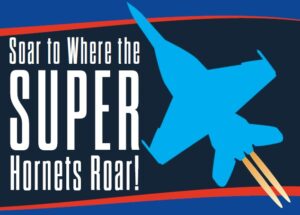Yellow Truck and Coach Division of General Motors
MAKE
Bus
MODEL
The Yellow Truck and Coach of GM built this parlor coach as the ultimate in highway travel. The exterior appearance is that of a conventional Z-250 model passenger bus; however, this proto RV offers all the comforts of home with air conditioning, Pullman berths, a kitchen telephone, and lavatory including a shower. It was typically operated by a crew of three.
The bus designed initially used by the president of Buick Motor Division. It was later purchased by Anheuser-Busch of Saint Louis, Missouri, where it provided August A. Busch Jr. first class transportation o numerous trips across the country (1941-1946). Inline 6-cylinder, 616 cid, 150 hp., wheelbase: 250," built in Pontiac MI, acquired by Museum in 1969.
Cartercar
MAKE
Model 5 Roadster
MODEL
Cartercar Model 5 Roadster used in the 1965 film, "The Great Race," inspired by the actual 1908 New York to Paris race.
Hudson
MAKE
Model 33 Touring Car
MODEL
Hudson Model 33 Touring car once owned by W.C. Fields.
Overland
MAKE
61-T
MODEL
Overland 61-T automobile owned by the Museum which had been used in the film, "The Great Race," starring Jack Lemmon, Tony Curtis, and Natalie Wood, inspired by the actual 1908 New York to Paris race.
Firetruck
MAKE
George Barris, Barris Custom Cars
MODEL
Fire Bug was a a car-sized fire truck. First used by the Los Angeles Fire Department, it was later driven by the zany Banana Splits characters in a TV show, "The Banana Splits Adventure Hour."
The original plan was for this creation, the Fire Bug, to be a promotional or parade rig for the Los Angeles City Fire Department during Fire Prevention Week and such, even though it lacks the departmental markings you might expect. It was a 1969 collaboration between George Barris and his partner-of-the-moment, Dick Dean. Mechanically, it's a chopped-pan Volkswagen Microbus, oddly fitted with dual rear wheels.
.
A. L. Dyke Company
MAKE
Steam Kit Car
MODEL
Steam Kit Car by A. L. Dyke Company. Donated in 2010 by the Means family. Richard E. Means discovered this Dyke steam-powered car unassembled in a barn in the late 1950s after his previous Stanley Steamer exploded. It was sold in kit form from 1901-1904. The challenge of putting the vehicle together without instructions became the ultimate puzzle. Mr. Means soon realized that not all the pieces were included with his rare find and he had to improvise with other parts.
Established in St.Louis MO in 1899 by A. L. Dyke (Andrew Lee Dyke), Dyke was the first American auto parts distributor. Dyke also sold early autos, kit car or assembled. In addition to the Dyke name, the company also sold automobiles under the St. Louis Motor Company and Dyke-Britton names.
Dorris
MAKE
Panel Truck
MODEL
The Dorris Motor Car Company in St. Louis MO introduced its first car in 1906 and became known for advanced technology, sturdiness, and restrained elegance. This 1919 Dorris began life as a 6-80 touring car but was converted to a panel truck and used for years by the Debrecht market and grocery in St. Louis.
Six-cylinder engine; 377 cubic inch displacement; 80 horsepower; 132 inch wheelbase. Price new $5,400. Acquired by Museum in 1983 from donor Edward Walsh.
Ford
MAKE
Model T Touring Car
MODEL
Introduced in 1908, the Model T offered simplicity, reliability, and respectable performance in an affordable package. When Henry Ford added the moving assembly line to Model T production, the result was a car that not only became cheaper to buy every year but one that dominated world-wide automobile production for almost two decades. By 1922, over one million "Flivvers" were being sold annually. Its aging design led to the replacement of the Model T with the Model A for the 1928 model year. The Model T had a front mounted 177 cubic inch inline four-cylinder engine producing 20 hp for a top speed of 40-45 mph. The cost of a 1915 Model T was approximately $390 dollars.
Henry Ford’s approach to the Model T design was one of getting it right and never changing. He believed the Model T was all the car a person would ever need. However, there were design changes. For example, in 1915 the hood design retained the five-sided design but louvers were added to the vertical sides, and electric headlights replaced carbide headlights.
Specifications: 4-cylinder engine; 176.7 cubic inch displacement; 20 horsepower; 100 inch wheelbase; built in Highland Park MI; donated in 1969 by Preston Estep.








